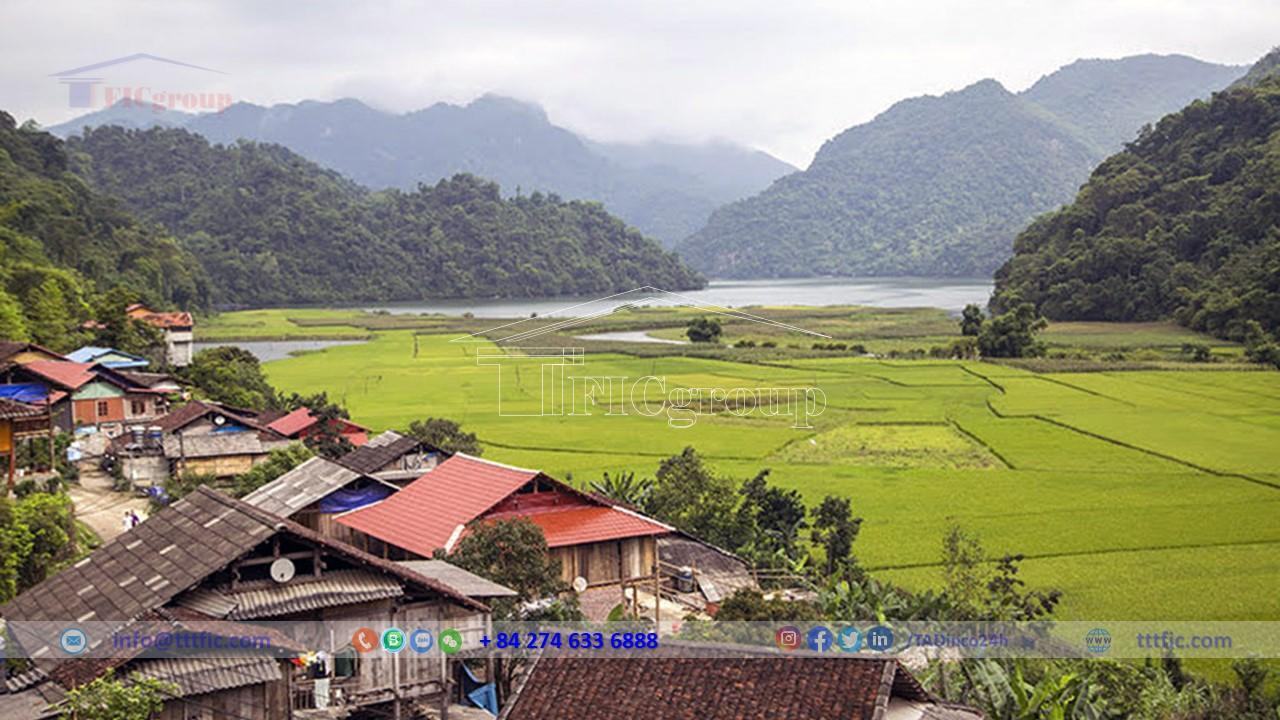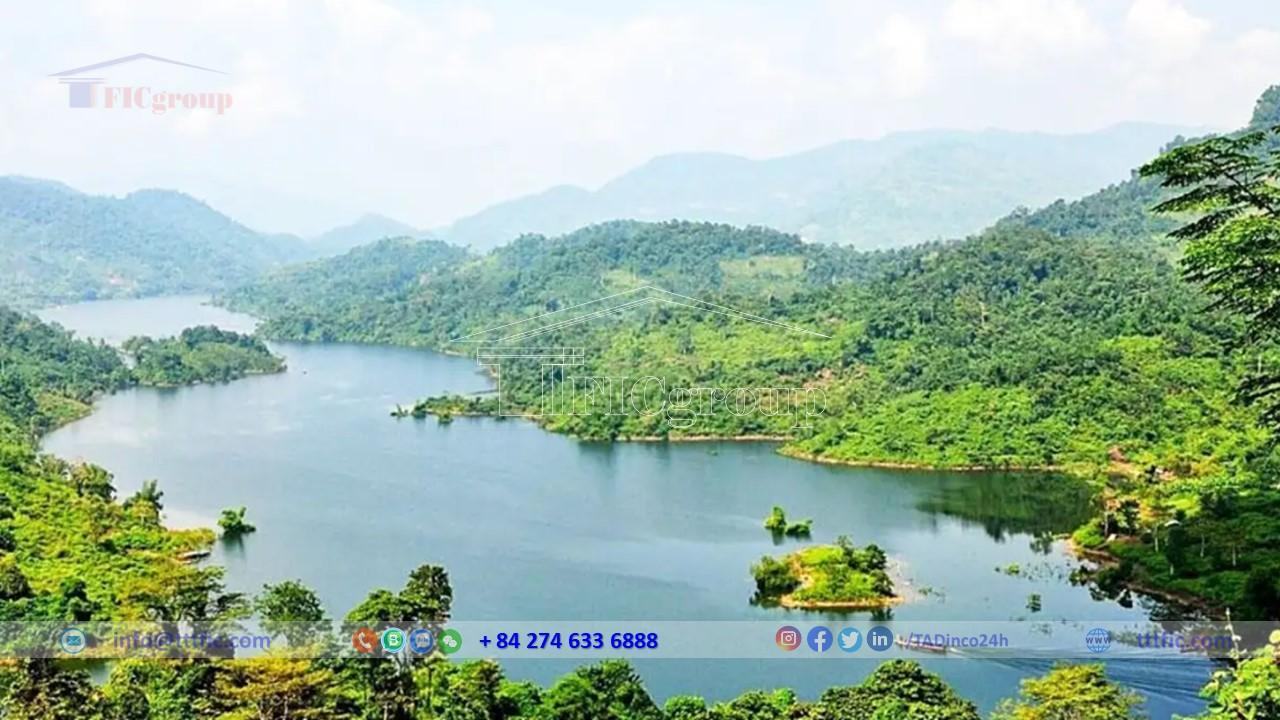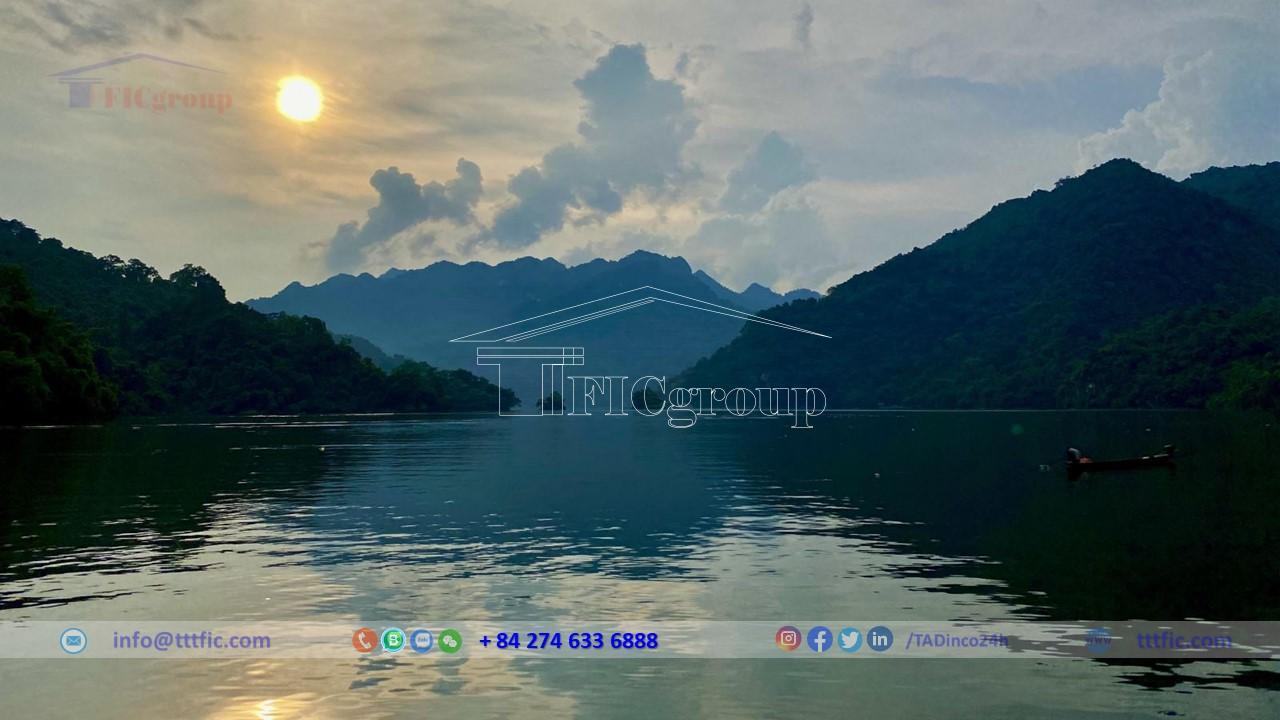Bac Kan Province:
Bac Kan is a province in the Northeast region of Vietnam, with its capital city also called Bac Kan. It is situated 162 km away from Hanoi. In 1996, the National Assembly of Vietnam divided Bac Thai Province into two provinces: Bac Kan and Thai Nguyen. Despite this, many people still mistakenly write the province’s name as Bac Can. To address this, the Vietnam News Agency (TTXVN) officially announced the unified name Bac Kan, without the letter “C.” The name originates from “Bac Can” (北扞) in the Sino-Vietnamese language and was Tày-Nùngized into “Bac Can.” Its exact meaning is uncertain, but it is believed to be derived from “Pac Kan” in the Tày-Nùng language. Bac Kan is associated with the Tày term “pac cam,” meaning “gateway” or “pac cap,” representing the intersection of flowing currents.
In 2018, Bac Kan ranked 63rd in population, Gross Regional Domestic Product (GRDP), per capita GRDP, and GRDP growth rate among administrative units in Vietnam. It had a population of 327,900, with a GRDP of 9,765 billion Vietnamese dong (0.4272 billion USD), a per capita GRDP of 30 million dong (1,303 USD), and a GRDP growth rate of 6.20%.
Geography:
Bac Kan, a mountainous province in Northeast Bac Bo, shares borders with several districts of neighboring provinces.
- To the north are Bao Lac, Nguyen Binh, and Thach An districts in Cao Bang Province.
- To the east are Trang Dinh and Binh Gia districts in Lang Son Province.
- To the south are Vo Nhai, Phu Luong, and Dinh Hoa districts in Thai Nguyen Province.
- To the west are Na Hang, Chiem Hoa, and Yen Son districts in Tuyen Quang Province.
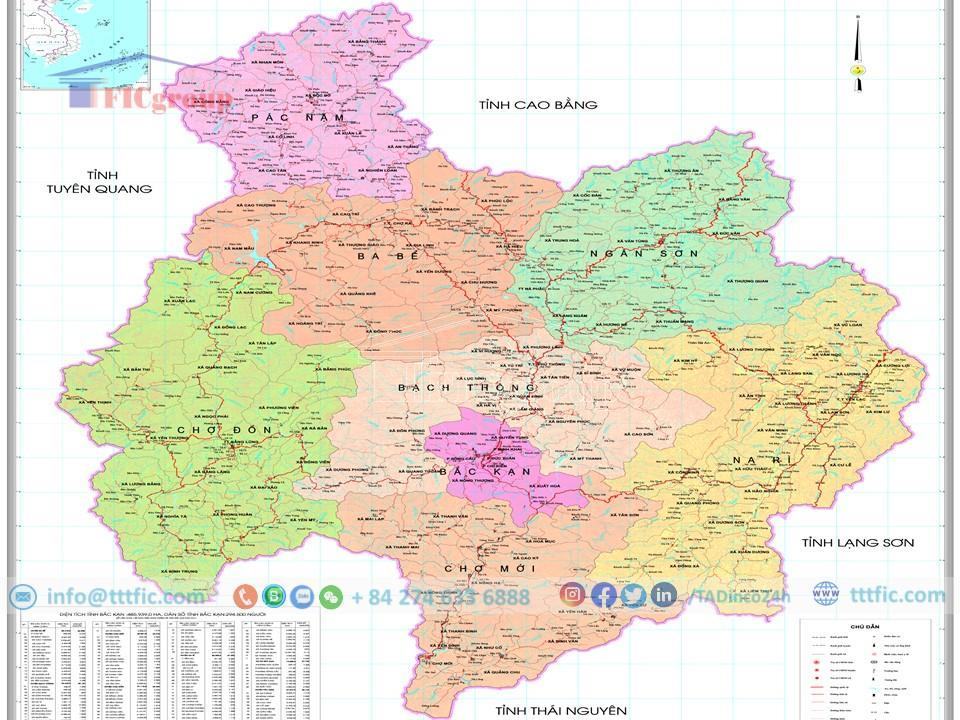
Topography:
Curved mountain ranges facing east and interspersed with valleys characterize the province’s terrain. Three regions can divide Bac Kan. The western and northwest region includes Cho Don, Pac Nam, and Ba Be districts, with a northwest-southeast arc direction that determines the flow of the Cau River. The highest mountain range is Phja Bjoooc, reaching an elevation of 1,578 meters. The eastern and northeast region comprises the Ngan Son mountain system, running in a north-south direction and expanding towards the northeast. The central region is a low-lying area, sandwiched between the high mountains of the Gâm River system to the west and the Ngan Son system to the east.
Climate:
Located within the tropical belt of the Southeast Asia monsoon, Bac Kan experiences distinct seasonal variations in temperature, rainfall, and day and night length. It is strongly influenced by the continental climate of Asia, with cold winters and limited impact from summer storms.
Land:
The natural land area of Bac Kan spans 485,996 hectares, with agricultural land covering 44,116 hectares (9.08%), forest land encompassing 413,366 hectares (85.05%), and other types of land, such as specialized land, residential land, and unused land, accounting for 28,514 hectares (5.87%). The fertile land, with thick soil layers in many hilly and mountainous areas, is suitable for agricultural and forestry production, as well as the cultivation of industrial crops and fruit trees.
Economy of Bac Kan Province:
In 2022, the province’s economic development showed positive progress. The projected economic growth rate was achieved as follows:
– The Gross Regional Domestic Product (GRDP) reached 8,297 billion VND, surpassing the plan at 101% and experiencing a 6.01% growth compared to 2021.
– The Agriculture, Forestry, and Fisheries sector achieved 2,290.8 billion VND, meeting the plan at 100% and showing a 3.83% growth compared to 2021.
– The Industrial and Construction sector reached 1,442 billion VND, exceeding the plan at 103%, with a growth of 8.96% (10% growth in the industrial sector and 8.3% growth in the construction sector).
– The Services sector reached 4,309 billion VND, meeting the plan at 100%, and experiencing a growth of 6.25% compared to 2021.
The total production value within the province reached 15,014 billion VND, surpassing the plan at 102%. The per capita GRDP was estimated at 46.3 million VND, meeting the plan at 101% and increasing by 4.5 million VND compared to 2021. The economic structure consisted of the Agriculture, Forestry, and Fisheries sector accounting for 28.9%, the Industrial and Construction sector accounting for 16.1%, the Services sector accounting for 52%, and the Production Tax sector accounting for 3%.
Agriculture, forestry:
In 2022, the province of Bac Kan continued implementing its policies and plans for agricultural development, focusing on commodity production, value chain expansion, and the construction of new rural areas. Rice and corn production met the targets, and winter planting of crops like corn, vegetables, potatoes, sweet potatoes, and chili peppers made good progress. Livestock and aquaculture sectors showed stability, with the population of large livestock, pigs, and poultry meeting or exceeding targets. Successful forestry development and afforestation efforts, along with strengthened forest protection and management, resulted in notable achievements. Additionally, the province recognized six communes for meeting new rural standards, demonstrating its commitment to building new rural areas.. Some natural disasters affected the province, resulting in casualties, property damage, and losses in agricultural production.
Industry
In 2022, various departments and authorities at all levels supported and encouraged the implementation of industrial projects, especially infrastructure investments in four industrial clusters. They regularly inspected and monitored the production and business activities of enterprises to assess impacts and promptly resolve difficulties and obstacles. As a result, the industrial sector remained stable, and provincial businesses and production facilities accelerated their operations, showing signs of recovery and achieving satisfactory results.
In December, the Industrial Production Index (IIP) in the province increased by 4.51% compared to November and 19.36% compared to the same period last year. Compared to the previous year, the accumulated growth for the entire year of 2022 reached 8.81%.. The industrial production value in December reached approximately 172 billion VND, a 5.2% increase from the previous month and a 17.32% increase compared to the same period. The estimated accumulated value for the entire year of 2022 was 1,586 billion VND, reaching 98% of the plan and increasing by 10.1% compared to the same period in 2021.
The plan ensured the well-executed progress of infrastructure investment projects in the industrial clusters. In December, the province continued to urge investors to expedite the completion of the detailed construction plans for the 1/500-scale industrial clusters in Bac Kan province. They also provided guidance to encourage and organize the socialization of investment, construction, business, and environmental infrastructure management for the industrial clusters in the province.
Construction:
In 2022, the province actively implemented the mid-term public investment plan for the 2021-2025 period. To ensure timely execution and disbursement, the Provincial People’s Council made adjustments to the mid-term and 2022 public investment plans. Additionally, they organized conferences and inspection teams, focusing on localities, important projects, and infrastructure.
Investors received urgent directions regarding investment preparation, compensation, land clearance, and project implementation. In the initial months of the year, the Bac Kan Provincial People’s Committee issued regulations on decentralized management and implementation of public investment projects.
They granted approval for the progress of priority projects in Group A and B. For development investment in 2022, the committee allocated a detailed budget plan of 2,647.98 billion VND, reaching 100% of the central government’s allocated budget. In August, an additional budget plan of 621.46 billion VND was assigned for national target programs.
By December 20, 2022, the disbursement reached 1,359.36 trillion VND, accomplishing 40.2% of the plan. Specifically, the local budget disbursement amounted to 369.721 trillion VND, achieving 65.4% of the plan. The central budget supplementary disbursement for localities reached 898.466 trillion VND, reaching 41%. Within these figures, domestic funding by sectors and industries reached 810.733 trillion VND, achieving 45% of the plan. Foreign funding disbursement amounted to 87.733 trillion VND, reaching 22% of the plan, while national target program funding disbursement reached 91.119 trillion VND, achieving 14.7% of the plan.
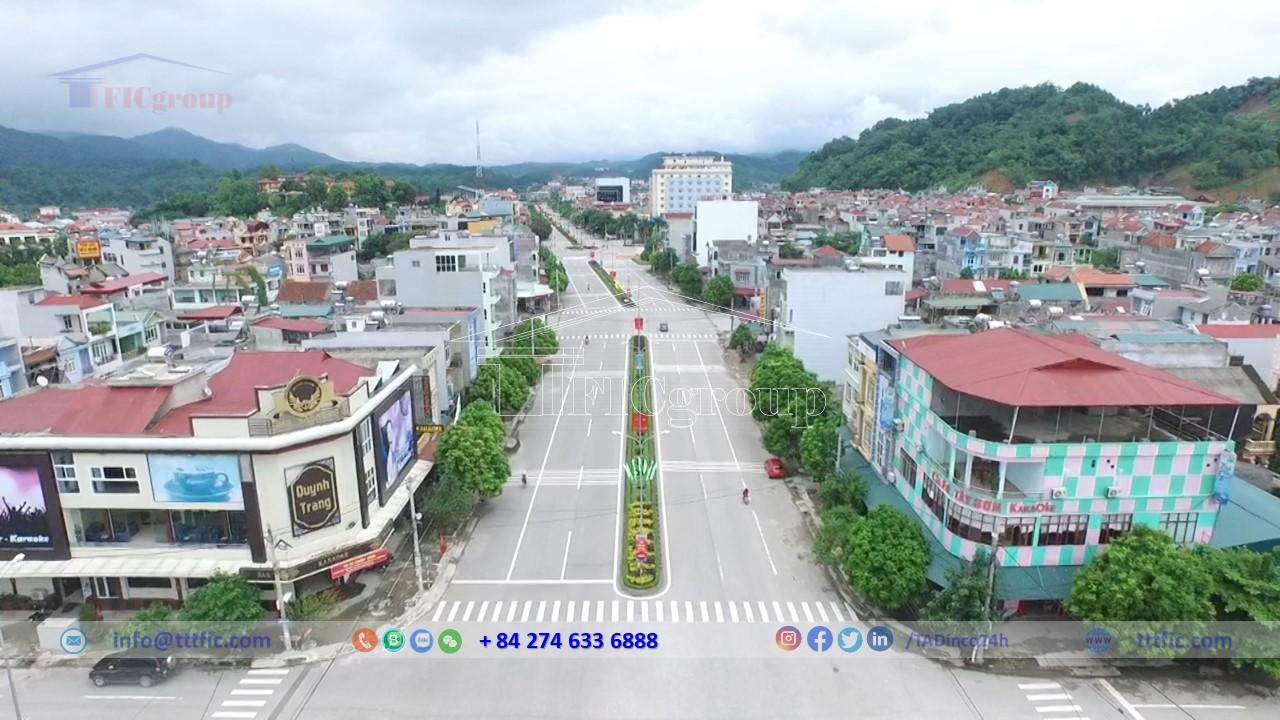
Service – Business:
In 2022, the province’s market situation remained stable and developed, with a diverse range of goods meeting consumer needs. Additionally, retail sales and consumer service revenue in December reached approximately 661 billion VND, representing a 12.6% increase compared to the previous month and a 26% increase compared to the same period last year. Moreover, the total revenue for the year amounted to 6,231 billion VND, achieving 99% of the plan and reflecting a 14% increase from 2021.
To further promote trade activities, the province actively supported trade fairs and events both within and outside its borders. Notably, the import-export turnover in December totaled around 2.174 billion USD, with exports reaching 1.307 billion USD and imports reaching 0.867 billion USD. The overall import-export turnover for the year amounted to 34.410 billion USD, surpassing the annual plan by 137.64% and showing a slight increase compared to the previous year.
In terms of tourism, the Provincial People’s Committee implemented a comprehensive plan for the recovery and development of tourism in Bac Kan province in 2022. This included successful events such as the Bac Kan tourism promotion conference, the “Week of Tourism – Ba Be Cultural Heritage” program, and the national recognition of Bac Kan’s intangible cultural heritage. As a result, the total number of tourists reached 461 thousand, generating a revenue of 321 billion VND, which accounted for 73% of the plan.
Social:
Education:
In 2022, the Provincial People’s Committee directed the implementation of education and training tasks according to the annual plan for the 2021-2022 school year and the guidance of the Ministry of Education and Training. Despite the initial impact of the Covid-19 pandemic, the education sector proactively adjusted teaching methods to suit local conditions, resulting in a graduation rate of 97.66%, surpassing the set target.
For the 2022-2023 academic year, the Provincial People’s Committee provided the necessary preparations for the new school year and ensured the implementation of the curriculum and textbooks according to the 2018 General Education Program. The province continued to restructure and streamline the school network and implemented plans to construct nationally standardized schools. Currently, 92 out of 288 schools in the province, accounting for 31.94% (40 preschools, 31 primary schools, 6 combined primary-secondary schools, 14 lower secondary schools, and 1 upper secondary school), have met national standards. Additionally, 12 more schools are expected to meet the standards by the end of 2022, reaching a total of 104 schools.
The province formulated resolutions to determine expenditure and revenue in educational activities and submitted them to the Provincial People’s Council. Furthermore, active measures were taken to implement the “Wave and Computers for Kids” program.
Healthcare:
To prevent and control the Covid-19 pandemic, the province implemented strict measures. Additionally, guidance was provided on the safe and compliant administration of Covid-19 vaccines.As a result, healthcare providers administered a total of 808,672 doses by November 20, 2022. Furthermore, vaccination rates for individuals above 18 years old were as follows: 98.58% for the first dose, 96.37% for the second dose, 96.59% for the third dose, and 97.15% for the fourth dose. Similarly, for individuals aged 12 to 17, the rates were 99.37% for the first dose, 97.37% for the second dose, and 85.92% for the third dose. Moreover, among the 5 to under 12-year-old age group, the first dose rate was 93.2%, and the second dose rate was 90.21%.
In the healthcare sector, the focus was on maintaining and improving the quality of medical examination, treatment, and healthcare services. This included ensuring an adequate supply of medicine and medical equipment. Additionally, the healthcare sector deployed new techniques to meet the needs of the population. Throughout, it upheld strict adherence to professional standards and promptly addressed any patient complaints. Moreover, the implementation of targeted healthcare programs and population-related health programs was highly effective. In addition, the healthcare sector took proactive measures to prevent and control diseases, closely monitoring seasonal outbreaks.
Overall, the province demonstrated a proactive approach in combating the pandemic. Consequently, the healthcare sector safeguarded the well-being of the population and efficiently managed disease surveillance.


